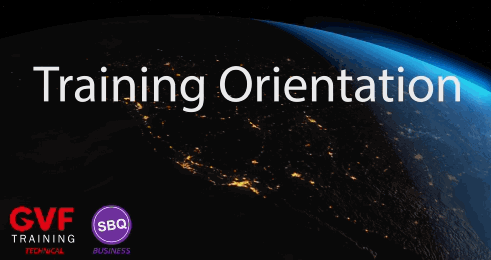
GVF599 : Training Orientation (take this first!)
Take this course first to learn about the GVF Training program and how to use it.
Take this course first to learn about the GVF Training program and how to use it.
This free course introduces you to the GVF Training program and gives you guidelines on how best to use the online learning system. Ed. 2.0 contains all-new content and is written in HTML5 for display on any browser. Click here to get this free course!
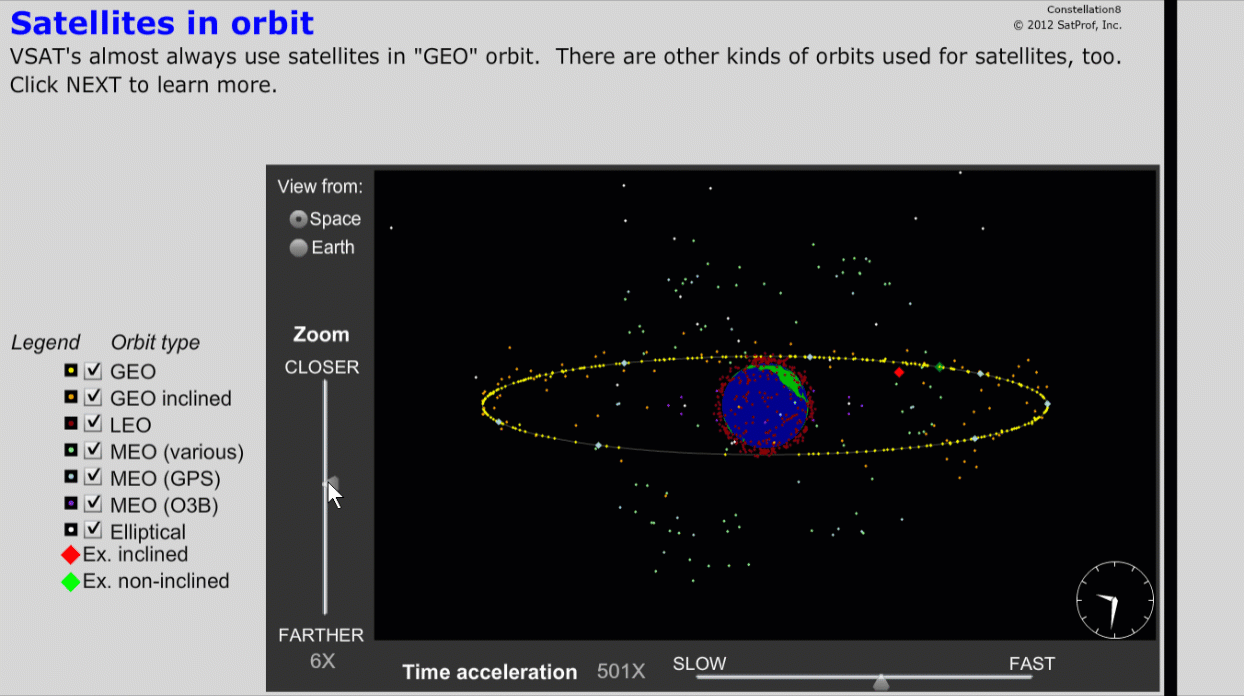
GVF500 Ed2 : Introduction to Satellite Communications
Comprehensive overview of the technology and business of satellite communications.
Comprehensive overview of the technology and business of satellite communications.
Covers history, launchers, orbits, frequencies, networks, equipment, bandwidth, applications, markets, regulations, and industry structure, and much more. Upon completion, trainees will be equipped with a solid understanding of how the satcom market is structured and the capabilities of the technology that makes it all possible. Edition 2.1 (Aug 2019) includes high-throughput satellites, new launcher players, new market data, and other updates. Audience: Everyone who would benefit from a broad knowledge of industry fundamentals, including sales executives, marketing managers, business leaders, and technical, engineering, operations, quality, and customer service staff. Certificate: A quiz after each lesson reinforces student knowledge. A GVF certificate of completion is generated when the student has visited all pages and passed all quizzes. Prerequisites: General familiarity with computer and voice communications Delivery: Animated & interactive HTML5, self-paced, on-line format. Requirements: internet access while studying the course material (high speed preferred ); current browser with JavaScript enabled; permission to access SatProf server and learning system websites; mouse.
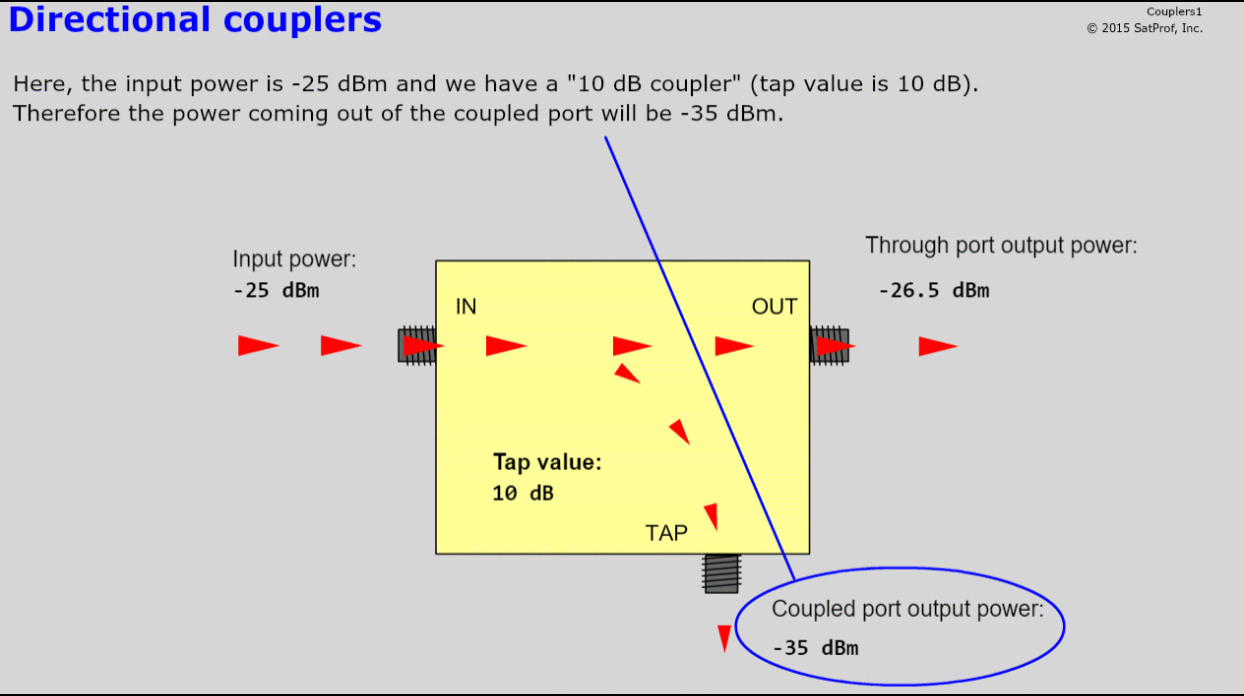
GVF505 : RF and DC Theory for Satellite Systems
Important theory and knowledge about DC and RF for all satellite technicians.
Important theory and knowledge about DC and RF for all satellite technicians.
Covers DC theory (Ohm's law, loop resistance, voltage drops), gains, losses, levels, and dB, cables and connectors (including VSWR, return loss, cable types, and connector attachment), and standard RF components, such as attenuators, amplifiers, splitters, couplers, taps, and power inserters, and grounding and discharge protection. Audience: GVF 505 and 506 are are important first steps for technicians entering the fields of satellite television and communications. Prerequisites: None. Delivery: Animated & interactive HTML5, self-paced, on-line format. Requirements: internet access while studying the course material (high speed preferred ); current browser with JavaScript enabled; permission to access SatProf server and learning system websites; mouse. Tests: Each lesson contains a mandatory quiz; some lessons may also contain simulator-based skill assessments. All pages must be viewed and all quizzes and simulator tests must be passed in order to complete the course.

GVF506 : Theory of Satellite TV Systems
Theory and knowledge important for all technicians and engineers involved with satellite television broadcast systems.
Theory and knowledge important for all technicians and engineers involved with satellite television broadcast systems.
Theory and knowledge important for all technicians and engineers involved with satellite television broadcast systems. The lessons cover digital TV transmission, microwaves and polarization, and receive systems. Audience: GVF 505 and 506 are are important first steps for technicians entering the fields of satellite television and communications. Prerequisites: None. Delivery: Animated & interactive HTML5, self-paced, on-line format. Requirements: internet access while studying the course material (high speed preferred ); current browser with JavaScript enabled; permission to access SatProf server and learning system websites; mouse. Tests: Each lesson contains a mandatory quiz; some lessons may also contain simulator-based skill assessments. All pages must be viewed and all quizzes and simulator tests must be passed in order to complete the course.
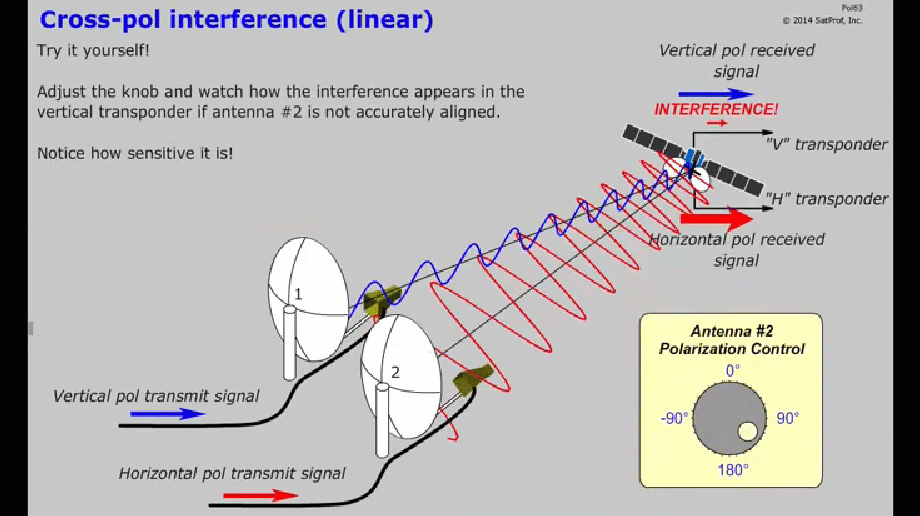
GVF510 Ed2 : Core Skills for VSAT Professionals
Critical skills required for fixed-antenna VSAT field technicians and engineers, focusing on accurate antenna alignment and prevention of major source...
Critical skills required for fixed-antenna VSAT field technicians and engineers, focusing on accurate antenna alignment and prevention of major sources of uplink interference.
Improper installation technique is a major cause of interference, which degrades satellite transponder performance for all users. Developed in coordination with major satellite operators, GVF 510 teaches technicians the correct way to point an antenna, align cross pol, attach connectors, and decommission terminals – four leading causes of avoidable interference. As the first step towards GVF Satcom Professional Certification, GVF 510 teaches and evaluates the core skills that all VSAT field technicians must have – regardless of the type of equipment they install. Includes advanced interactive 3-D simulations. Second edition: updated, includes new cross-pol and other simulators. Prerequisites:Basic knowledge of DC and RF theory. GVF 505 and 506 recommended. Audience: All installers, field technicians, and engineers who may be responsible for activating any type of VSAT terminal. Delivery: Animated & interactive HTML5, self-paced, on-line format. Requirements: internet access while studying the course material (high speed preferred ); current browser with JavaScript enabled; permission to access SatProf server and learning system websites; mouse. Languages:English only (limitation of HTML5 conversion). Tests:Each lesson contains a mandatory quiz and simulator-based skills assessments. All pages must be viewed and all quizzes and simulator tests must be passed in order to satisfactorily complete the course. Certification:Students who pass this course and the GVF Basic Hands On Skills Test will receive the GVF Basic Satcom Professional Certification. This course is also required as a pre-requisite for the GVF Advanced Satcom Professional certification and all GVF Satcom Professional Specialist certifications. Reference materials included:: GVF Quick Reference Sheet for satellite field technicians; extensive glossary.
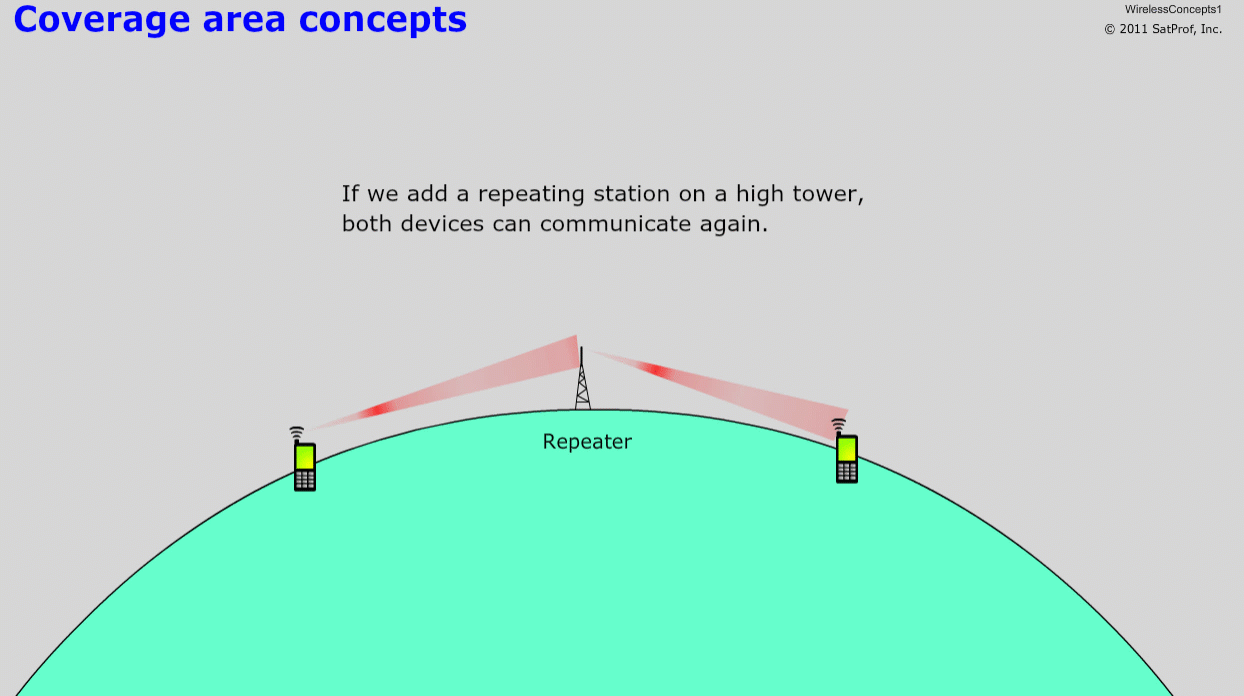
GVF520 : Satcom Fundamentals
Fundamental theory of VSAT communications for all VSAT technicians and engineers. Includes advanced interactive graphical simulations.
Fundamental theory of VSAT communications for all VSAT technicians and engineers. Includes advanced interactive graphical simulations.
GVF520, the second in a series of three online courses leading to Advanced Satcom Professional Certification, provides the student with a thorough understanding of the fundamental theories of satellite communications. This knowledge is essential for every skilled and effective satellite ground equipment terminal field technician. Audience: The course is appropriate for all installers and field technicians who may be responsible for activating any type of VSAT terminal, as well as engineers and technicians desiring a technical introduction to two-way satellite communications. Delivery: Animated & interactive HTML5, self-paced, on-line format. Requirements: internet access while studying the course material (high speed preferred ); current browser with JavaScript enabled; permission to access SatProf server and learning system websites; mouse. Tests:Each lesson contains a mandatory quiz and simulator-based skills assessments. All pages must be viewed and all quizzes and simulator tests must be passed in order to satisfactorily complete the course.
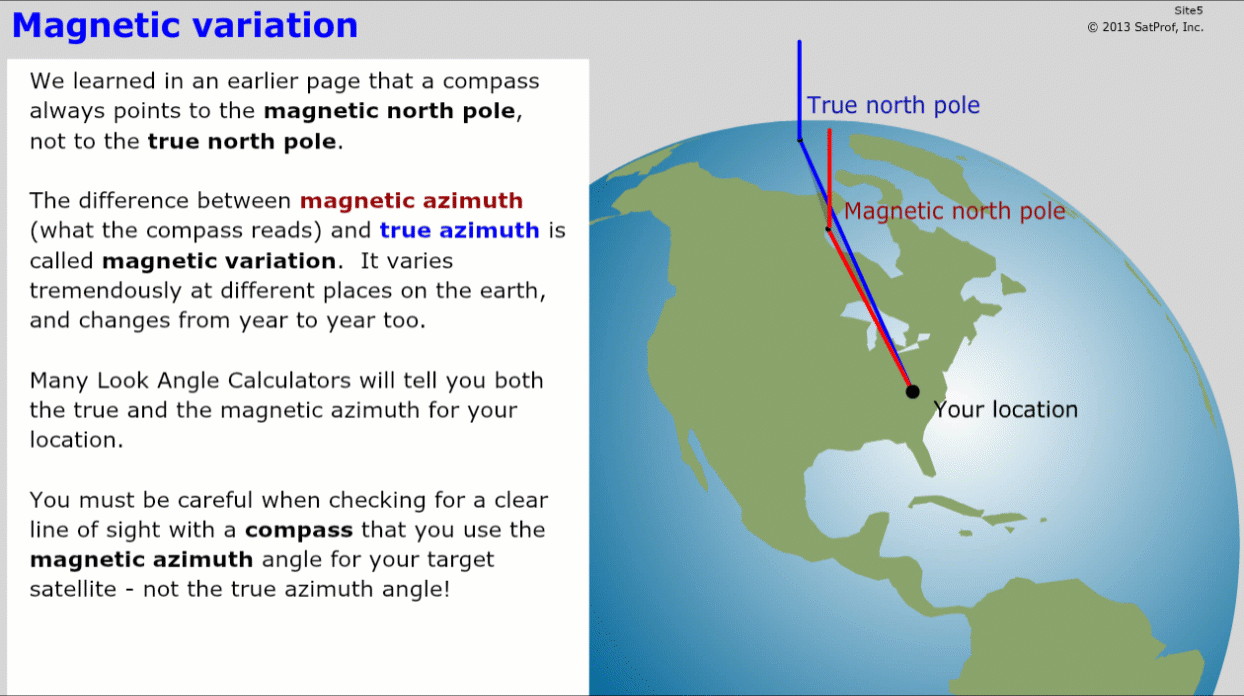
GVF521 : Practical Technique for VSAT Professionals
Knowledge, techniques, and practical tips that every field technician and installer needs to know in order to perform a high-quality, reliable VSAT in...
Knowledge, techniques, and practical tips that every field technician and installer needs to know in order to perform a high-quality, reliable VSAT installation job.
As the follow-on course to GVF510 (Core Skills) and GVF520 (Satcom Fundamentals theory), GVF521 covers the range of knowledge, techniques, and practical tips that every field technician and installer needs to know in order to perform a high-quality, reliable VSAT installation job. Covers the range of practical tips, techniques, and knowledge taiolored for fixed-VSAT field technicians and installers, such as using a compass, calculating levels in dB, voltage drops, cable lengths, using a spectrum analyzer, grounding, basic IP networking, safety issues, and troubleshooting. This course has been updated to Ed. 1.4 for the LP5 delivery system. Prerequisites:Courses GVF510 and GVF520 . Audience: The course is appropriate for all installers and field technicians who may be responsible for activating any type of VSAT terminal. Delivery: Animated & interactive HTML5, self-paced, on-line format. Requirements: internet access while studying the course material (high speed preferred ); current browser with JavaScript enabled; permission to access SatProf server and learning system websites; mouse. Tests:Each lesson contains a mandatory quiz and simulator-based skills assessments. All pages must be viewed and all quizzes and simulator tests must be passed in order to satisfactorily complete the course.
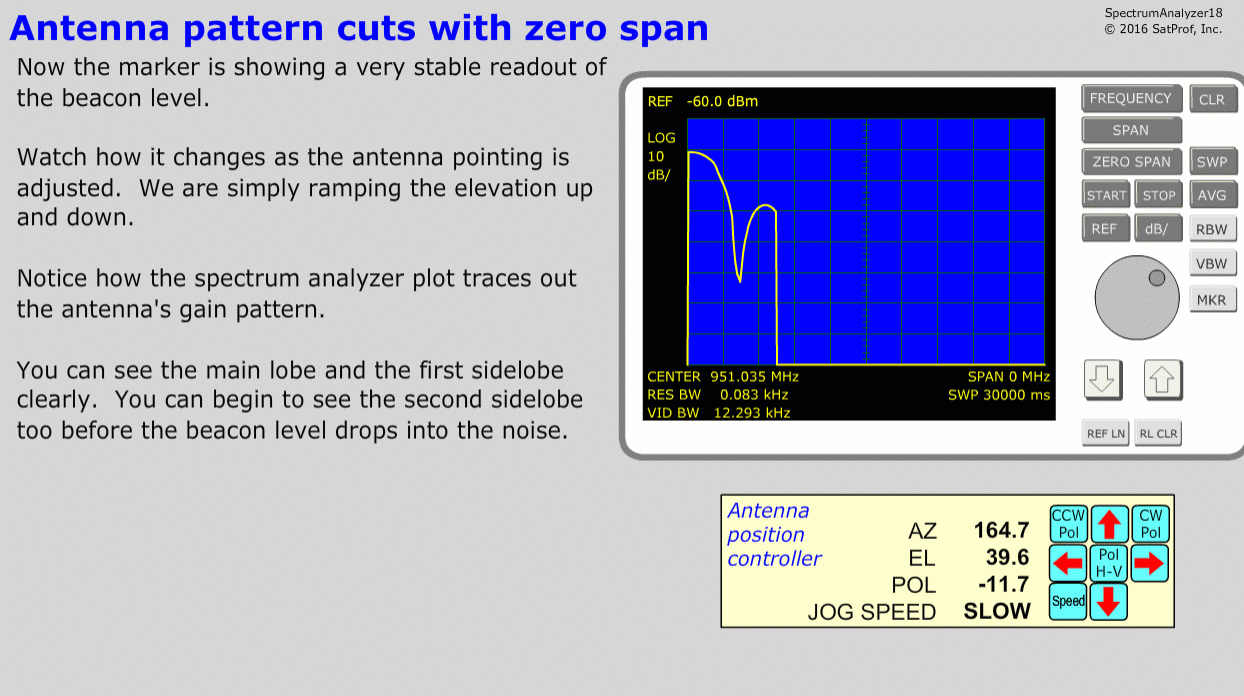
GVF522 : Spectrum Analyzer Theory
Theory of signals and their spectra, how a spectrum analyzer works, and how to make typical measurements in satcom systems. Includes live, interactive...
Theory of signals and their spectra, how a spectrum analyzer works, and how to make typical measurements in satcom systems. Includes live, interactive spectrum analyzer simulator.
Essential concepts and skills for understand how spectrum analyzers display signals, typical instrument controls, and common satcom measurement techniques. In this course we will review essential theory of signals and their spectrums using interactive 3D time-frequency graphs, learn how a spectrum analyzer works with live animations, and discuss how to make typical measurements in satellite communications systems. You will be using a live, functional, interactive spectrum analyzer simulator for tutorials, skills practice, and skills assessments. Prerequisites:GVF 520 recommended. Audience:Engineers and technicians who use spectrum analyzers or who wish to learn about spectrum measurement theory. Delivery: Animated & interactive HTML5, self-paced, on-line format. Requirements: internet access while studying the course material (high speed preferred ); current browser with JavaScript enabled; permission to access SatProf server and learning system websites; mouse. Tests: Each lesson contains a mandatory quiz. The third lesson also includes randomized skill assessments using the fully-function spectrum analyzer simulator. All pages must be viewed and all quizzes and simulator tests must be passed in order to successfully complete the course.
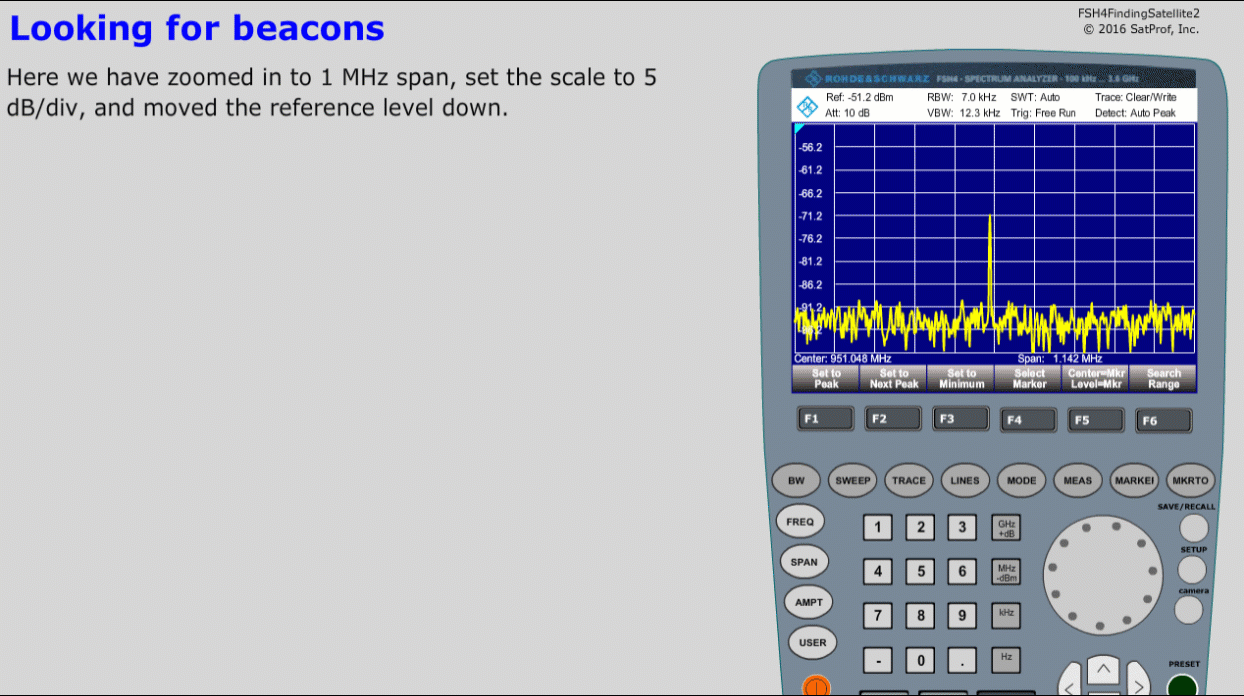
GVF523 : Operating the Rohde and Schwarz FSH4 Spectrum Analyzer
How to use the Rohde and Schwarz FSH4 spectrum analyzer, with a focus on satellite communications applications.
How to use the Rohde and Schwarz FSH4 spectrum analyzer, with a focus on satellite communications applications.
The Rohde and Schwarz model FSH4 is an advanced, highly flexible, portable spectrum analyzer, designed for wireless, microwave, satellite, and other RF and microwave applications. In this course we will apply the general concepts of spectrum analysis from GVF 522 to the specifics of using the FSH4 for satellite applications. We will learn about using the FSH4 controls and display, discuss optimizing settings for best display of certain signal types, work through some practical examples, and discuss some of the FSH4's advanced features. The course includes numerous videos as well as a live, interactive functional simulator of the FSH4. Prerequisites:GVF 520 and 522 recommended. Audience:Engineers and technicians who use the FSH4. Delivery: Animated & interactive HTML5, self-paced, on-line format. Requirements: internet access while studying the course material (high speed preferred ); current browser with JavaScript enabled; permission to access SatProf server and learning system websites; mouse. Tests:Each lesson contains a mandatory quiz. To pass the course, all pages must be viewed and all quizzes passed.
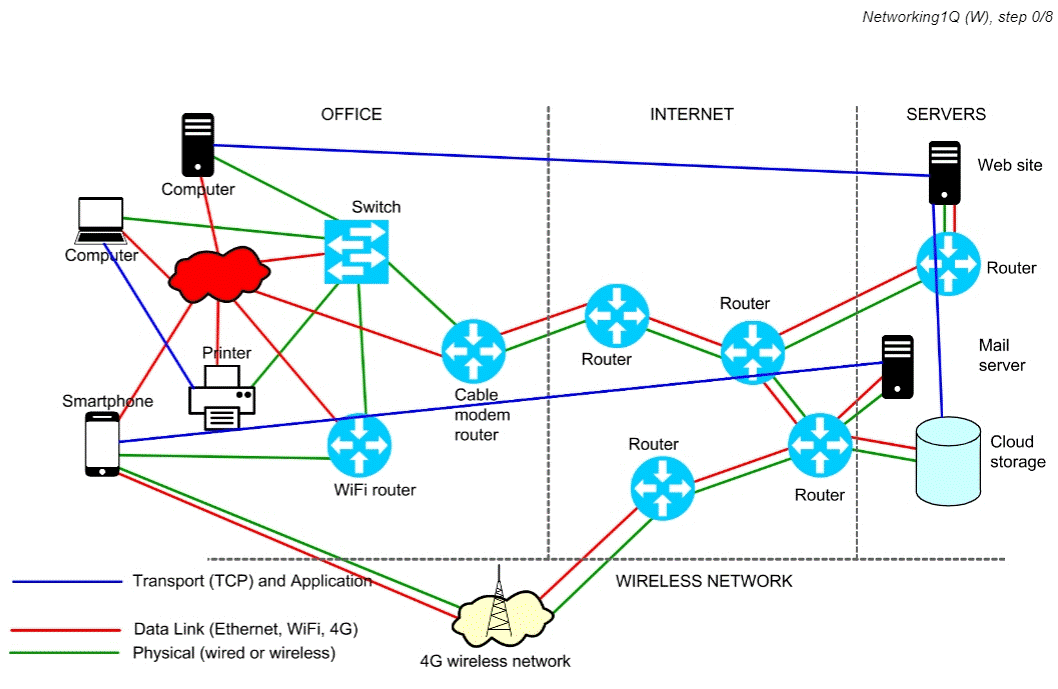
GVF524 : Networking Fundamentals
Comprehensive overview of the principles and standards for modern data networking, include all layers ot the TCP/IP protocol, including fiber optics,...
Comprehensive overview of the principles and standards for modern data networking, include all layers ot the TCP/IP protocol, including fiber optics, WiFi, Ethernet, VLANs, switching, routing, TCP, UDP, HTTP, SSH, IPv6, and all related layer technologies and common network management tools.
In this course, we will take a broad look at the fundamentals of networking, with an emphasis on TCP/IP (the Internet protocol suite). The course will: 1. Introduce the architecture and typical mechanisms of the Internet, review the TCP/IP protocol layers, discuss the IETF, compare TCP/IP with the OSI model, and relate encapsulation to protocol layers 2. Survey the Physical Layer, focusing on Ethernet over copper and fiber cables, and the physical aspects of WiFi. 3. Discuss the Data Link Layer, including Ethernet frames and local networking, switching, VLANs, and the data link aspects of WiFi. 4. Examine the Network Layer, including the details of IP, as well as ARP/RARP, net masks and subnets, routing, DHCP, multihoming, NAT, non-routable addresses, multicast, and ICMP. 5. Discuss the Transport Layer, including UDP, TCP, hostnames and the hosts file, DNS, and TLS/SSL. 6. Review the Application Layer, including Web Pages (HTTP and HTTPS), Remote Login (SSH, TELNET), File Transfer (FTP, SFTP), and Network Management (SNMP). 7. Discuss useful tools for managing and troubleshooting networks, including ping, traceroute, ipconfig, tcpdump, whois, netstat, speedtest, subnet calculators, IP scanners, and WiFi troubleshooting 8. Discuss examples of devices, services, and typical network operations. 9. Briefly discuss IPv6, how it compares with IPv4, and future prospects. At the end of each lesson, there will be quiz. You must pass all quizzes and view all tutorials to pass the course. The course is interactive and self paced. An Internet connection and current browser are required.
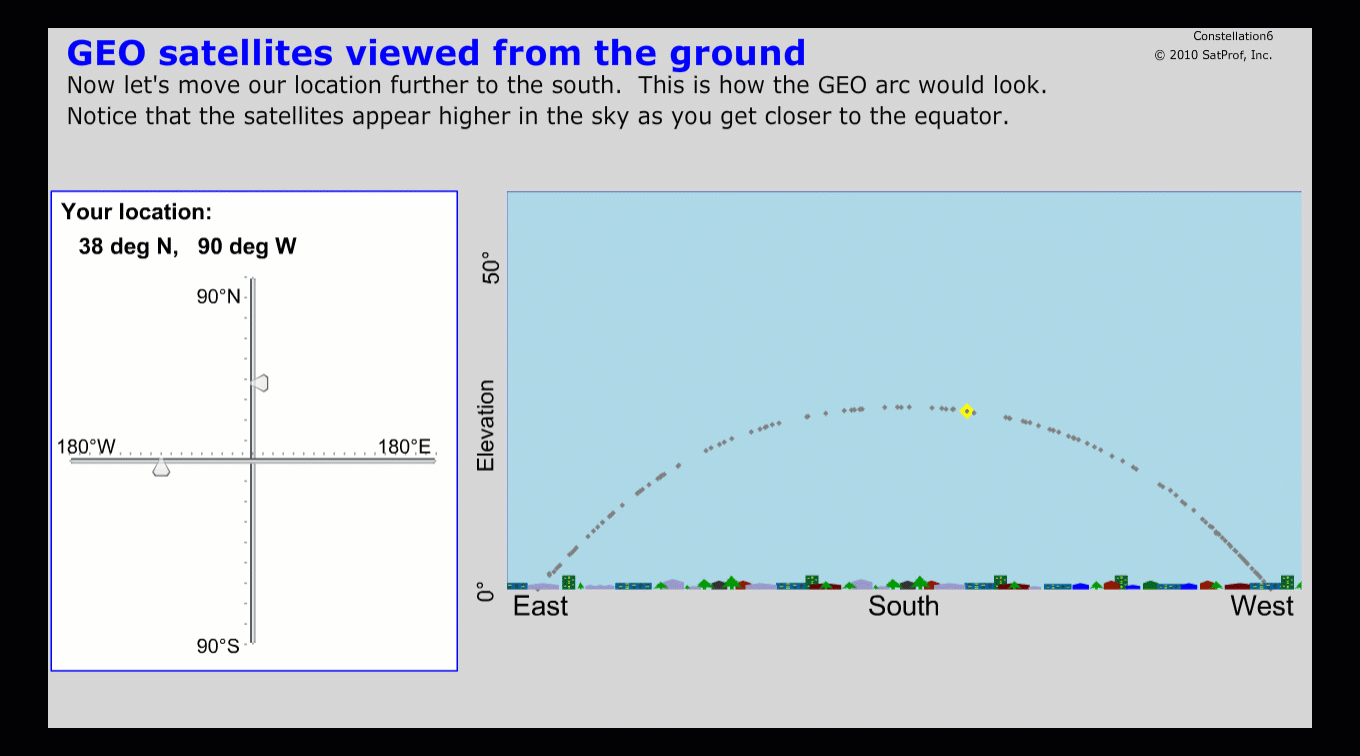
GVF530 : Core Skills for Mobile Satellite Terminal Operators
Key skills for all operators of auto-point (auto-deploy) satellite terminals.
Key skills for all operators of auto-point (auto-deploy) satellite terminals.
Fully automatic auto-point (often called auto-deploy) satellite terminals equipped with managed (VSAT) modems enable you to rapidly and easily establish communications. Even if your auto-point/auto-deploy satellite terminal is fully automatic, there are a few critical skills you need beyond simply pressing the green button! In this course you will learn how to use pointing angles (az and el) to decide where your antenna should be placed for a clear view to the satellite. You will also learn basic concepts and troubleshooting, such as the effect of rain, how to check your equipment, the importance of interference prevention, and how to tell if your equipment qualifies as GVF Type Approved. Prerequisites:None. Why get certified? Certification demonstrates technical competence and documents an ability to adhere to the satellite industry’s best practices. It’s easy for uplink operators to make interference and not even be aware they are doing it; as a profession, all uplinkers must take responsibility for protecting the satellite arc, and the right way to do that is to get trained and certified. The GVF certification exam portfolio is an excellent tool for assessing the skills of new staff candidates, evaluating individual performance capabilities, and identifying voids in skills and knowledge that can be addressed through training. Certification holders are also eligible to be listed in GVF’s online, searchable contact database. The GVF certification series is the only industry certification program that specifically addresses the skills and knowledge that all satellite uplinkers should have. Exam and certification: This course is part of a training sequence tailored for broadcaster certification examinations implemented and hosted by GVF. When you have completed this course, you will be ready to attempt the knowledge tests and simulator skills tests in the Basic AutoPoint Operator (BAPO) exam. Note: The BAPO exam is given online on the GVF learning system, but it is not included in the GVF 530 course itself. You must enroll in certification exams separately, or join the GVF Training Membership, which includes this course and the BAPO exam. Delivery:Animated & interactive HTML5, self-paced, on-line format. Requirements: internet access while studying the course material (high speed preferred ); current browser with JavaScript enabled; permission to access SatProf server and learning system websites; mouse.
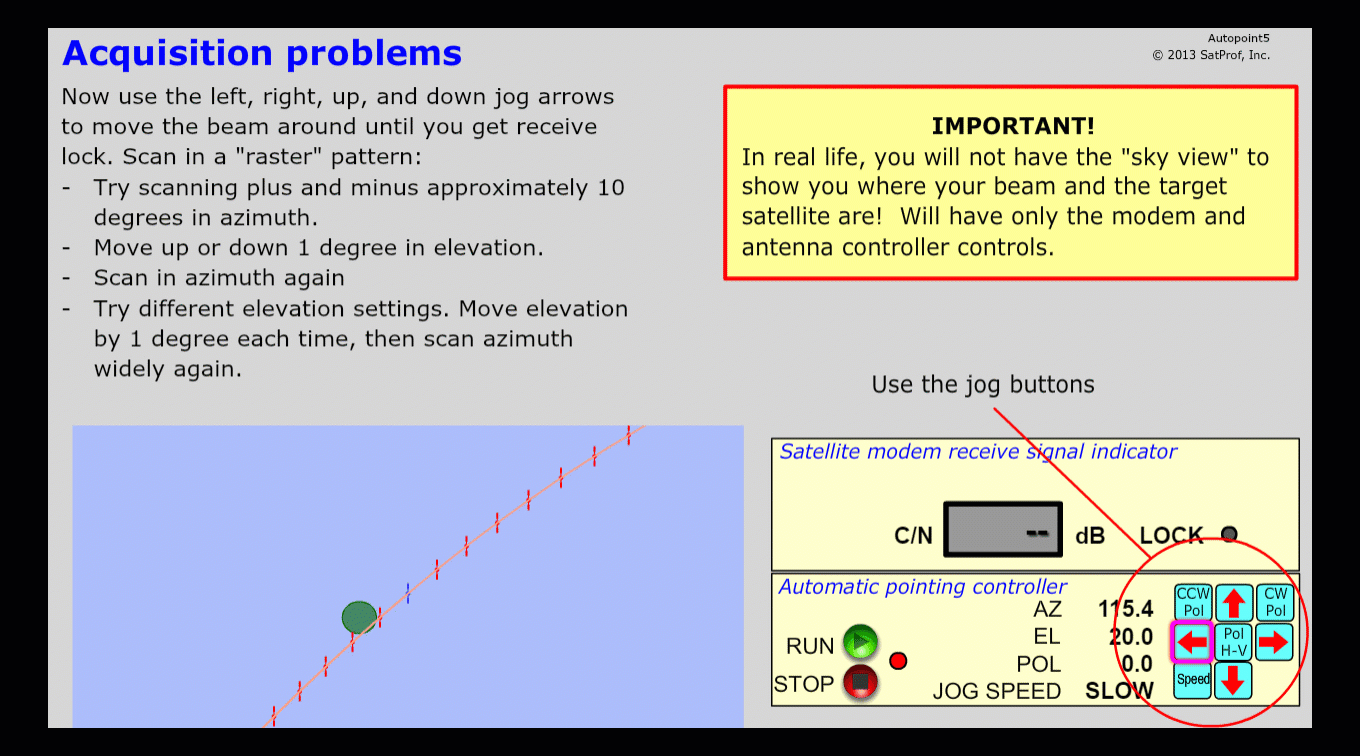
GVF531 : Access Procedure Skills
Accurate pointing and cross-pol alignment skills for operators of auto-point terminals that are not type approved.
Accurate pointing and cross-pol alignment skills for operators of auto-point terminals that are not type approved.
Fully automatic auto-point (often called auto-deploy) satellite terminals equipped with managed (VSAT) modems enable you to rapidly and easily establish communications. If your auto-point/auto-deploy antenna is not GVF Type Approved, there are some additional checks you need to make before you transmit; otherwise you could be unintentionally interfering with other users. In this course you will learn how to confirm that your antenna is accurately pointed and how to work with the satellite operator to carry out a cross-pol check. In this course, which follows on from GVF 530, you will learn how to check for accurate pointing, perform a cross-pol alignment with the satellite access center, and follow the industry best-practices guidelines, the General Access Procedure document. Prerequisites:GVF 530. Why get certified? Certification demonstrates technical competence and documents an ability to adhere to the satellite industry’s best practices. It’s easy for uplink operators to make interference and not even be aware they are doing it; as a profession, all uplinkers must take responsibility for protecting the satellite arc, and the right way to do that is to get trained and certified. The GVF certification exam portfolio is an excellent tool for assessing the skills of new staff candidates, evaluating individual performance capabilities, and identifying voids in skills and knowledge that can be addressed through training. Certification holders are also eligible to be listed in GVF’s online, searchable contact database. The GVF certification series is the only industry certification program that specifically addresses the skills and knowledge that all satellite uplinkers should have. Exam and certification: This course is part of a training sequence tailored for broadcsater certification examinations, which are implemented and hosted by GVF. If you have already taken course GVF530 and you complete the GVF531 course, you will be ready to attempt the knowledge tests and simulator skills tests in the General AutoPoint Operator (GAPO) exam. Note: The GAPO exam is given online on the GVF learning system, but it is not included in the GVF 531 course itself. You must enroll in certification exams separately, or join the GVF Training Membership, which includes this course and the GAPO exam. Delivery: Animated & interactive HTML5, self-paced, on-line format. Requirements: internet access while studying the course material (high speed preferred ); current browser with JavaScript enabled; permission to access SatProf server and learning system websites; mouse.

GVF532 : Core Uplinking Skills
Key skills for operators of manually-controlled, motorized earth stations, such as teleports and SNG trucks.
Key skills for operators of manually-controlled, motorized earth stations, such as teleports and SNG trucks.
In satellite news gathering (SNG) vans/trucks and in teleports, you're likely to find equipment with manual controls for antenna pointing, carrier setup, and a spectrum analyzer for monitoring the downlink. In this course, which follows on from GVF 530 and 531, you will learn how to access a satellite using a manually-controlled earth station without causing unintentional interference, including all the theory, knowledge, and skills required to pass the Basic Technical Operator (BTO) certification exam. In particular, you will learn how to use a spectrum analyzer to identify your correct satellite and to accurately point with the beam balance method. You will learn how to correctly pre-set polarization and then contact a Satellite Access Center to complete cross-pol alignment and carrier activation according to the Universal Access Procedure. Prerequisites:GVF 530 and GVF 531 (recommended). Why get certified? Certification demonstrates technical competence and documents an ability to adhere to the satellite industry’s best practices. It’s easy for uplink operators to make interference and not even be aware they are doing it; as a profession, all uplinkers must take responsibility for protecting the satellite arc, and the right way to do that is to get trained and certified. The GVF certification exam portfolio is an excellent tool for assessing the skills of new staff candidates, evaluating individual performance capabilities, and identifying voids in skills and knowledge that can be addressed through training. Certification holders are also eligible to be listed in GVF’s online, searchable contact database. The GVF certification series is the only industry certification program that specifically addresses the skills and knowledge that all satellite uplinkers should have. Exam and certification: This course is part of a training sequence tailored for broadcsater certification examinations, which are implemented and hosted by GVF. If you have already taken courses GVF 530 and 531 and you complete the GVF 532 course, you will be ready to attempt the knowledge tests and simulator skills tests in the Basic Technical Operator (BTO) exam. Note: The BTO exam is given online on the GVF learning system, but it is not included in the GVF 532 course itself. You must enroll in certification exams separately, or join the GVF Training Membership, which includes this course and the BTO exam. Delivery: Animated & interactive HTML5, self-paced, on-line format. Requirements: internet access while studying the course material (high speed preferred ); current browser with JavaScript enabled; permission to access SatProf server and learning system websites; mouse.
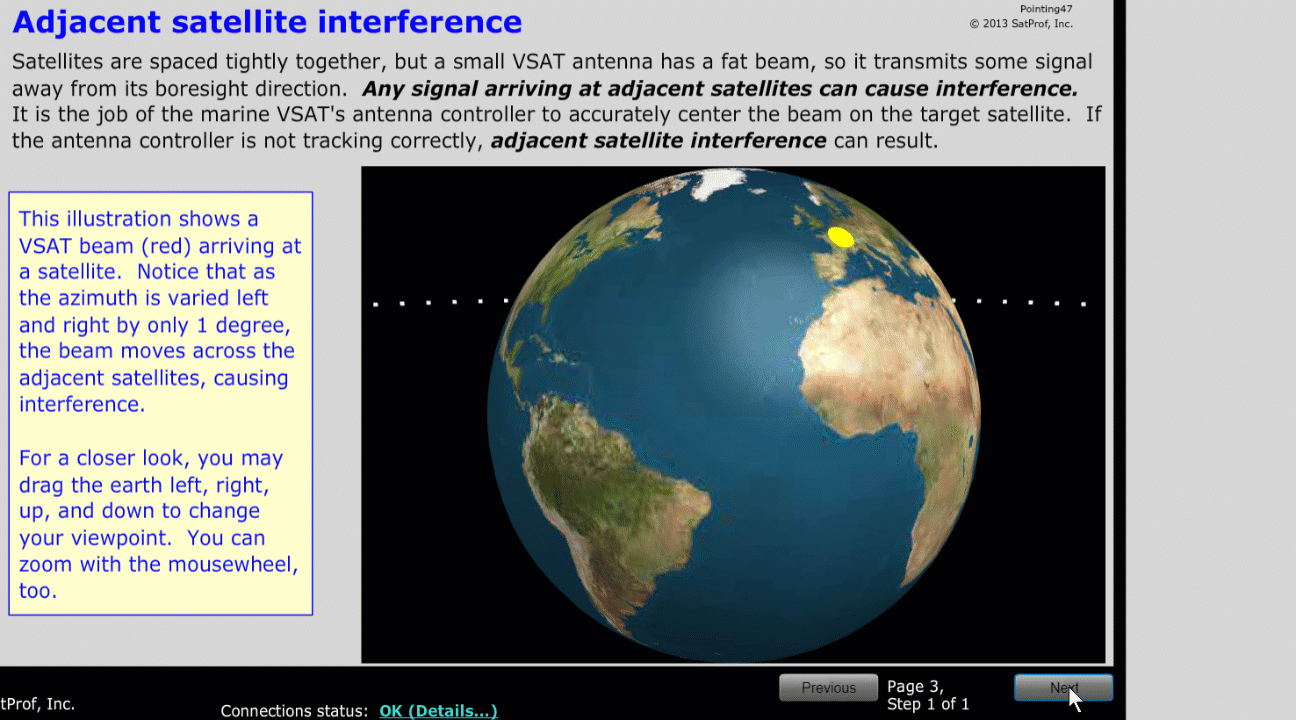
GVF561 : Fundamentals for Marine VSAT Operators
General knowledge and skills for crew responsible for operating and monitoring a satellite terminal at sea.
General knowledge and skills for crew responsible for operating and monitoring a satellite terminal at sea.
Covers satellite communications basics, antennas, interconnections to ship's navigation systems, problem solving, safety, regulatory and licensing questions, and comparing VSAT with other broadband marine services. Why should VSAT operators be trained? Marine satcom terminals offer global broadband coverage to ships at sea. But for maximum up-time, crew members must be able to perform critical ongoing operational tasks after the installation technician has departed. What will you learn in the course? In this course, you will learn fundamental aspects of how to monitor, operate, and perform at-sea maintenance of marine satcom and VSAT systems. Topics covered include concepts of VSAT communications, microwave signal characteristics, satellite coverage zones and pointing angles, beam switching, stabilized antennas, blockage, interconnections to ship’s navigation systems, safety issues, critical licensing questions, preventing interference, and comparing VSAT with other marine communications services. Audience: This course is ideal for all radio operators, IT technicians, or other crew members who are responsible for a VSAT system while underway. The course also serrves as the first step towards specialist operator certifications, and is ideal for those who simply need a solid introduction to broadband maritime satellite communications. Certification: Completion of GVF561 serves as the first step towards specialist operator certifications. Prerequisites: General familiarity with computer and voice communications. Delivery: Animated & interactive HTML5, self-paced, on-line format. Requirements: internet access while studying the course material (high speed preferred ); current browser with JavaScript enabled; permission to access SatProf server and learning system websites; mouse.

GVF562N : Operating the Intellian v100 and Similar Terminals
Specific knowledge and skills for crew responsible for operating and monitoring Intellian v100 and similar marine VSAT terminals at sea.
Specific knowledge and skills for crew responsible for operating and monitoring Intellian v100 and similar marine VSAT terminals at sea.
In this course, you will learn fundamental aspects of operation and at-sea maintenance and troubleshooting of the Intellian stabilized Ku/Ka marine antennas, including the v60, v60G, v80G, v100 and v100GX (in Ku-band mode) systems, with the v100 used for detailed examples. General operation and problem solving concepts covered in the course also apply to the v240K, v240C, and v240M antennas. Topics covered include hardware components of the Intellian v100 VSAT terminal, principles of operation of the terminal, startup and shutdown procedures, using the front panel operating controls, satellite modem operation, operator‐level troubleshooting, and preventive maintenance. Animation and simulator-based interactivity are used throughout the course to explain critical skills and concepts. Why should VSAT operators be trained? Marine VSAT terminals offer global broadband coverage to ships at sea. But for maximum up-time, crew members must be able to perform critical ongoing operational tasks after the installation technician has departed. Audience: This course is ideal for all radio operators, IT technicians, or other crew members who are responsible for operating and monitoring Intellian model v100 and similar Intellian Ku/Ka VSAT terminals while underway. Certification: Students who successfully complete this course are awarded the Marine Satcom Professional: Intellian Specialist Certification. Prerequisites: GVF 561 Delivery: Animated & interactive HTML5, self-paced, on-line format. Requirements: internet access while studying the course material (high speed preferred ); current browser with JavaScript enabled; permission to access SatProf server and learning system websites; mouse.
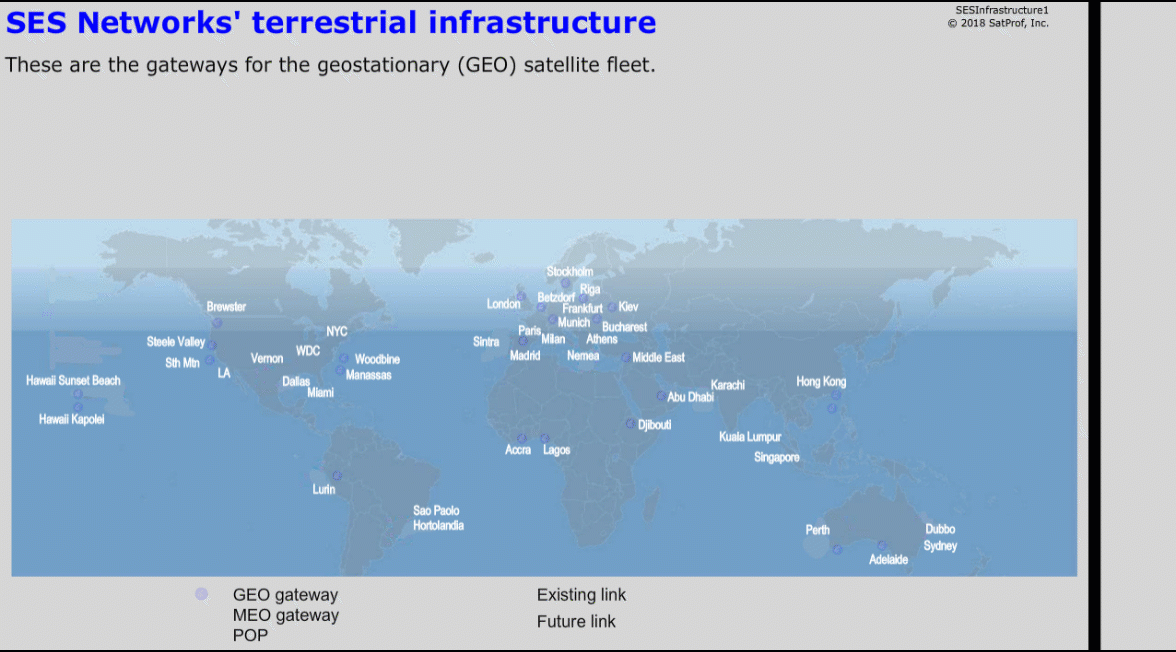
SES731 : Introduction to SES Networks
Introduction to SES Networks services and solutions.
Introduction to SES Networks services and solutions.
This course presents an introduction to SES Networks as a company, the services it provides, and how its network operates, with a focus on the fleet of O3b MEO satellites. Audience: With a high-level overview, this course is intended for SES Networks staff, customers, customer prospects, and the satellite communications industry. Prerequisites: None. Delivery: Animated & interactive HTML5, self-paced, on-line format. Requirements: internet access while studying the course material (high speed preferred ); current browser with JavaScript enabled; permission to access SatProf server and learning system websites; mouse. Tests: Each lesson contains a mandatory quiz. All pages must be viewed and all quizzes must be passed in order to complete the course.
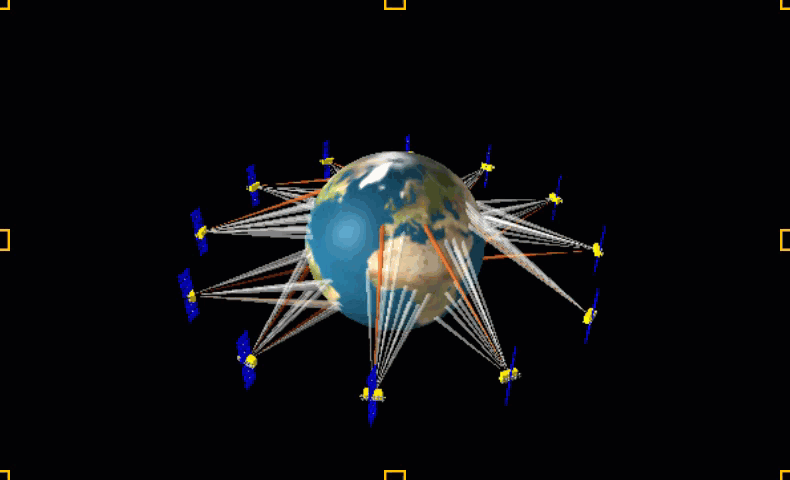
SES732 : O3b Advanced System Fundamentals
A wide-ranging technical overview of the operating principles of SES Networks’ O3b MEO constellation and services.
A wide-ranging technical overview of the operating principles of SES Networks’ O3b MEO constellation and services.
This course covers, in detail, the operating principles of SES's O3b network, including O3b network configuration, satellite constellation, beam configuration and management, ground equipment, and network and system management. Approvals required: Very important: By agreement with SES, before GVF may grant access to online training course SES 732, each student must be approved by SES. Approval is normally granted ONLY to students who are from existing SES customers, potential customers, service partner companies, SES employees, or current or potential SES contractors. Apply for approval here. Note: If you are an SES employee you will automatically be approved for the course. If you are not an SES employee and are unsure if you will be approved by SES Networks for this course, we recommend you apply for approval and receive your confirmation email prior to paying your tuition fee; if you are not approved, your fee can be refunded only as GVF tuition credit. Audience: This course is intended for SES staff, selected customers, and other specially approved students only. Prior approval from SES is required for enrollment. Prerequisites: GVF500 Introduction to Satellite Communications and GVF520 Satcom Fundamentals (recommended). Delivery: Animated & interactive HTML5, self-paced, on-line format. Requirements: internet access while studying the course material (high speed preferred ); current browser with JavaScript enabled; permission to access SatProf server and learning system websites; mouse. Tests: Each lesson contains a mandatory quiz; some lessons may also contain simulator-based skill assessments. All pages must be viewed and all quizzes and simulator tests must be passed in order to complete the course.
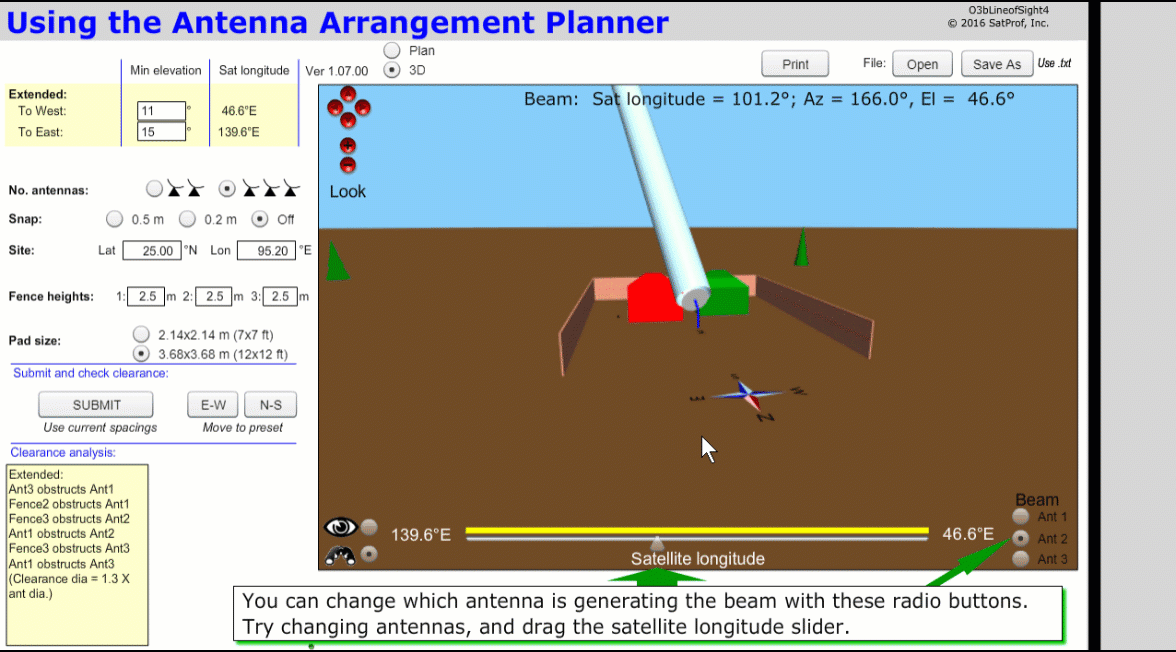
O3b733 : O3b Fixed Terminal Site Survey
Knowledge and skills required to survey a potential site for an SES Networks O3b Tier-2 fixed terminal.
Knowledge and skills required to survey a potential site for an SES Networks O3b Tier-2 fixed terminal.
In this course, you will gain the knowledge and skills required to survey a potential site for an O3b Tier-2 fixed terminal. You will learn how to use the included Antenna Arrangement Planner app to plan compact multi-antenna placement arrangements with a clear line of sight to the O3b arc. You will also learn how to use the included O3b Line of Sight mobile app, prepare for the site visit, fill out the survey report, plan the IFL run, analyze the existing AC/mains power system, document data inferface points, select a location for the indoor equipment, gather other necessary information, and report site details critical for a successful system installation. This course also includes all the forms that must be completed and submitted to SES after a survey, as well as access to specially-developed smartphone and Windows apps. Approvals required: Very important: By agreement with SES, before GVF may grant access to online training course O3b 733, each student must be approved by SES. Approval is normally granted ONLY to students who are from existing SES customers, potential customers, service partner companies, SES employees, or current or potential SES contractors. Apply for approval here. Note: If you are an SES employee you will automatically be approved for the course. If you are not an SES employee and are unsure if you will be approved by SES Networks for this course, we recommend you apply for approval and receive your confirmation email prior to paying your tuition fee; if you are not approved, your fee can be refunded only as GVF tuition credit. Audience: This course is required for field engineers who perform official O3b site surveys for fixed Tier 2 terminals. Prerequisites: SES 731 (required) Delivery: Animated & interactive HTML/Flash, self-paced, on-line format. Requires Internet access while studying the course material. High speed access is preferred but is NOT required. Student's computer must have a current browser and the current version of the Adobe Flash player (free) installed. Tests: Each lesson contains a mandatory quiz; some lessons may also contain simulator-based skill assessments. All pages must be viewed and all quizzes and simulator tests must be passed in order to complete the course. Reference materials included: Quick Reference Guide for field engineers O3b Tier-2 Site Survey Form O3b Tier-2 Site Preparation Guide Companion apps included: Antenna Arrangement Planner. Interactive 3-D app for a multi-antenna site to analyze if the beams from any antenna will be obstructed by any other antenna or the surrounding fence for for satellites at any point along the O3b arc. Generates reports which can be emailed as text files. Can save and read antenna arrangement configurations. For notebook or similar-sized screens. Windows and Mac. O3b Line of Sight App. Includes standalone mobile and windows applications for use in the field to help prepare site survey reports according to O3b standards. Note: The companion apps will fully function only if the user maintains a current, unexpired enrolment in O3b 733, or has previously enrolled in O3b 733 and holds a current GVF Training Membership.

SBQ400 : Welcome to the Business of Space
A free introductory course outlines the size of today’s industry, its major applications, and the basics of rocket launch and spacecraft communication...
A free introductory course outlines the size of today’s industry, its major applications, and the basics of rocket launch and spacecraft communication.
You will learn about the business of space, satellites and their benefits. You will also learn about the SBQ certification series of courses and how they can benefit your career. The course contains four short lessons, each with knowledge check questions (unscored). To complete the course, you must view all pages. Click here to get this free course!

SBQ401 : Fundamentals of Orbits and Getting into Space
Learn the principles of rocketry, the designs in use today, and the essentials of different orbits and how rockets reach them.
Learn the principles of rocketry, the designs in use today, and the essentials of different orbits and how rockets reach them.
To engage in the business of space, you need to have a general understanding how orbits work and how spacecraft get from earth into their designated orbits. We will not go into any mathematics or technical detail, but you will get an overview of: The basics of rocketry: what rockets do and how they do it. Examples of the various types of rocket that enable the space business today. Principles of orbits: how spacecraft move once they are launched into space, and why some orbits differ from others. What rockets need to do to get spacecraft into their proper orbits.
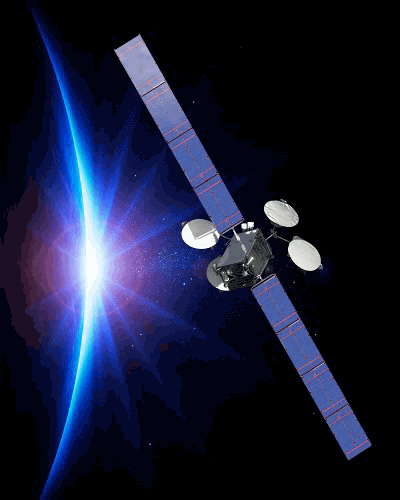
SBQ402 : Spacecraft Fundamentals
Gain an understanding what goes into a spacecraft and its impact on cost, size, and weight.
Gain an understanding what goes into a spacecraft and its impact on cost, size, and weight.
All space businesses are based on spacecraft, whether the business is communications, earth observation, exploration, navigation, or science. Understanding what goes into a spacecraft as a function of its application, and understanding the impact on cost, size, and weight (which drives launch cost) is a critical part of planning and managing a space business.
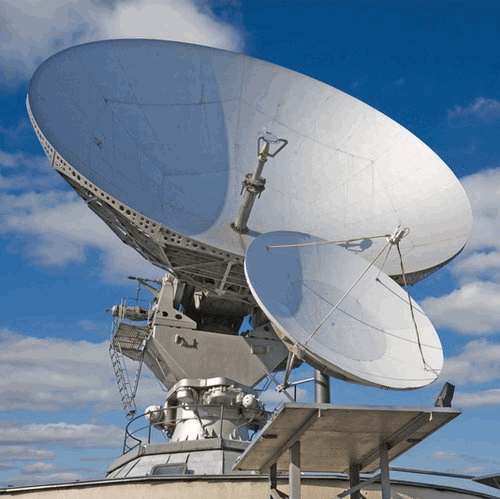
SBQ403 : Space Communications Fundamentals
All spacecraft rely on communications. Learn how communications links work, and their practical and theoretical limits.
All spacecraft rely on communications. Learn how communications links work, and their practical and theoretical limits.
Every spacecraft relies on communications with the ground and/or other spacecraft, and for communications satellites, communications is the entire reason the spacecraft exists! To engage in the business of space, you need to have a general understanding of how communications links work, and their practical and theoretical limits. We will not go into any mathematics or technical detail, but you will get an overview of: Why modern wireless communications are such amazing technology. The common ingredients of every digital communications link. The critical role of antennas. The eternal battle of signal vs noise. What is a link budget, why is it important. The effects of rain on earth-space links.

SBQ404 : Space Business Fundamentals - Markets
This unit introduces the established market sectors in the space business, their relative size and growth, and introduces the emerging markets that wi...
This unit introduces the established market sectors in the space business, their relative size and growth, and introduces the emerging markets that will propel the future of the business.
In this course we will introduce: The main market sectors in the space business: satellite communications, satellite broadcasting, earth observation from space, navigation, space science and exploration, launch services, and manufacturing spacecraft. What technology they rely on. How supply chains are structured. How these sectors compare in size and which of these sectors are growing. Although we will touch lightly on each of these topics, they course will give you a good general understand of space business issues and prepare you for more detailed study in later specialist courses.

SBQ405 : Space Business Fundamentals - Finance, Legal & Regulatory
Space is a capital-intensive business funded by public and private financing, and governed by complex legal and regulatory rules developed over decade...
Space is a capital-intensive business funded by public and private financing, and governed by complex legal and regulatory rules developed over decades.
In this course we will introduce the financing and regulatory frameworks that enable all the market sectors we discussed in previous courses. The lessons in this course will cover: Financial management and accounting as they apply to the space industry, with case studies in real-world satellite communications businesses. How insurance protects the high-CAPEX space industry and why it is so important. The national and international regulatory environment. Finally, as this is the last course in the SBQ Fundamentals series, we will review how to complete your initial certification and how to continue into SBQ specialty courses and certifications.

SBQ-CERT-FUND_22 : SBQ Fundamentals Certification Exam
Certification and recertification exam for SBQ Fundamentals Certification
Certification and recertification exam for SBQ Fundamentals Certification
Final exam for SBQ Fundamentals Certification. Also serves as the recertification exam. To open this exam, you must have completed courses SBQ400, SBQ401, SBQ402, SBQ403, SBQ404, and SBQ405
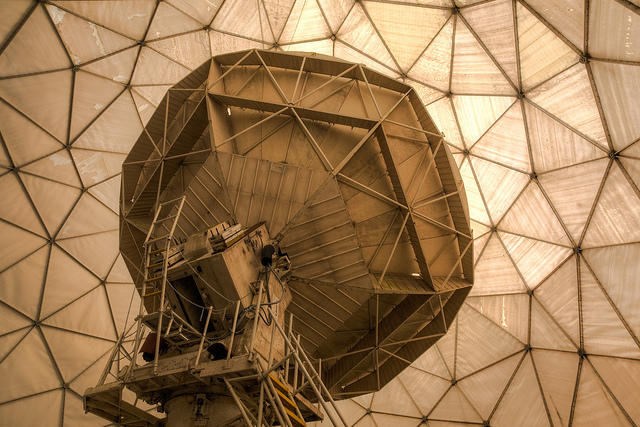
ENG812 : Link Budget Fundamentals
Theory and practice for analyzing point-to-point RF and microwave links and links through bent-pipe satellites.
Theory and practice for analyzing point-to-point RF and microwave links and links through bent-pipe satellites.
A classic link budget is an analysis of the strength of a signal as it passes through a radio, microwave, or satellite link, as well as the noise generated within the link. The result of the analysis will determine if the link can deliver an error-free (or almost error free) connection. In this course, you will learn how to analyse both simple point-to-point (single-segment) links and links through satellites with "bent pipe" transponders (dual-segment). We will explain all the equations so you will be able to make your own link analyses by hand, but you can use the included simulators to do all the calculations for you. Included with the course are a 16-page Quick Reference Guide, containing all formulas and constants, plus access to the SatProf Toolkit desktop app which contains RF calculators and single- and dual-segment link budget simulators. Audience:This course is recommended for engineers who are planning satellite or microwave links or wish to gain a deeper understanding of commercial link budget software data and results. Prerequisites:The following courses are recommended (unless you already have equivalent knowledge): GVF 505 (RF and DC Theory for Satellite Systems, GVF 520 (Satcom Fundamentals), and SBQ403 (Space Communications Fundamentals). Delivery:Animated & interactive HTML5, self-paced, on-line format. Requirements: internet access while studying the course material (high speed preferred ); current browser with JavaScript enabled; permission to access SatProf server and learning system websites; mouse. Tests: Each lesson contains a mandatory quiz. All pages must be viewed and all quizzes must be passed in order to satisfactorily complete the course. Some lessons also contain Skills Tests using link simulators which you must also pass.
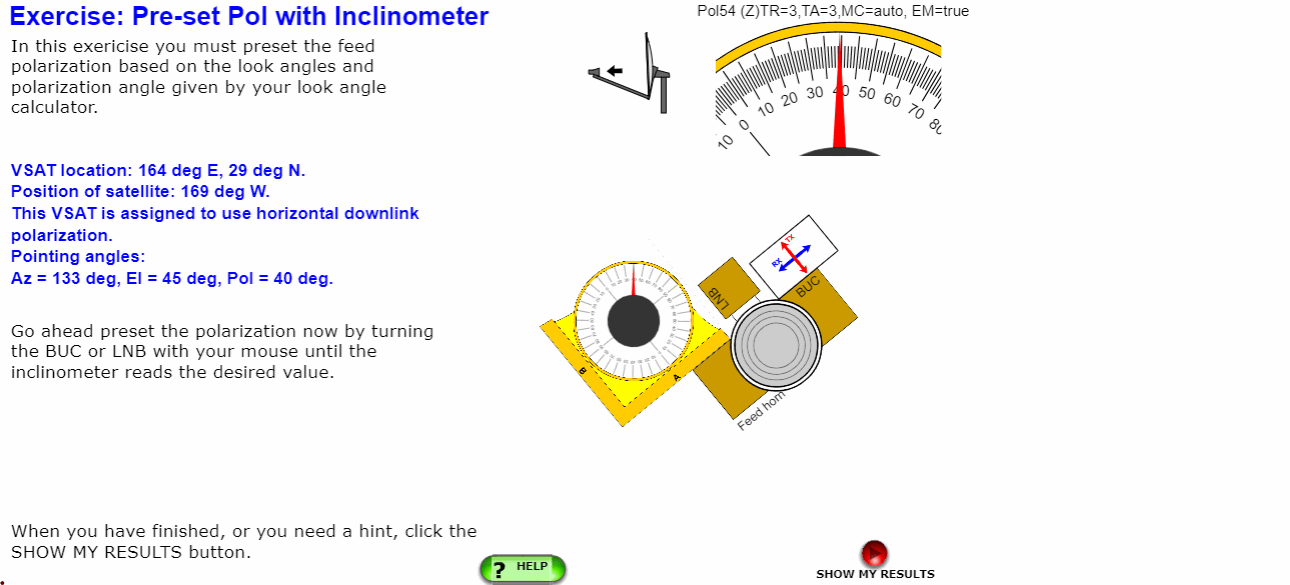
GVF-CERT-SPB_21 : Basic Satcom Professional Certification/Recert Exam
Certification and recertification exam for GVF Basic Satcom Professional Certification.
Certification and recertification exam for GVF Basic Satcom Professional Certification.
Final exam for GVF Basic Satcom Professional Certification. Also serves as the recertification exam. To open this exam, you must have completed course GVF 510 Edition 2 and the Basic Hands On Skills Test (HOST-B). If your certification has expired, take this exam to recertify, which will extend your certification for three years. GVF Training Member? Email gvfsupport@satprof.com to request free enrollment in this exam. Not a GVF Training Member? Purchase this exam and email support to request one-time 30-day extension of 510 ed2, if previously enrolled. For more info, please see the FAQ page.
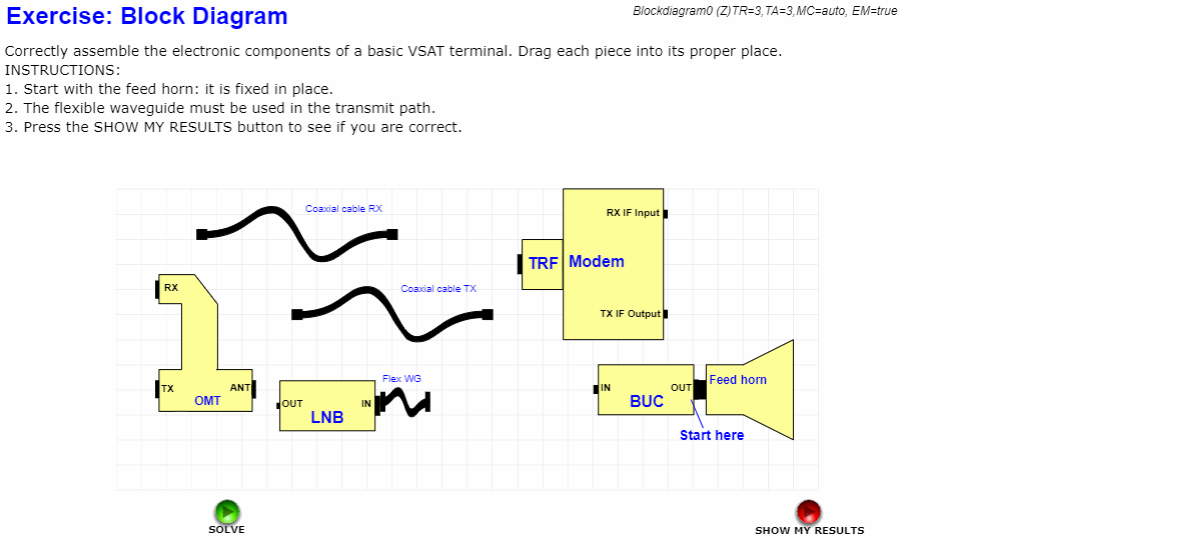
GVF-CERT-SPA_21 : Advanced Satcom Professional Certification/Recert Exam
Certification and recertification exam for GVF Advanced Satcom Professional Certification.
Certification and recertification exam for GVF Advanced Satcom Professional Certification.
Final exam for GVF Advanced Satcom Professional Certification. Also serves as the recertification exam. To open this exam, you must have completed course GVF 510 Ed. 2, GVF 520, and GVF 521, and and the Basic Hands On Skills Test (HOST-B). If your certification has expired, take this exam to recertify, which will extend your certification for three years. GVF Training Member? Email gvfsupport@satprof.com to request free enrollment in this exam. Not a GVF Training Member? Purchase this exam and email support to request one-time 30-day extension of 510 ed2, 520, and 521, if previously enrolled. For more info, please see the FAQ page.
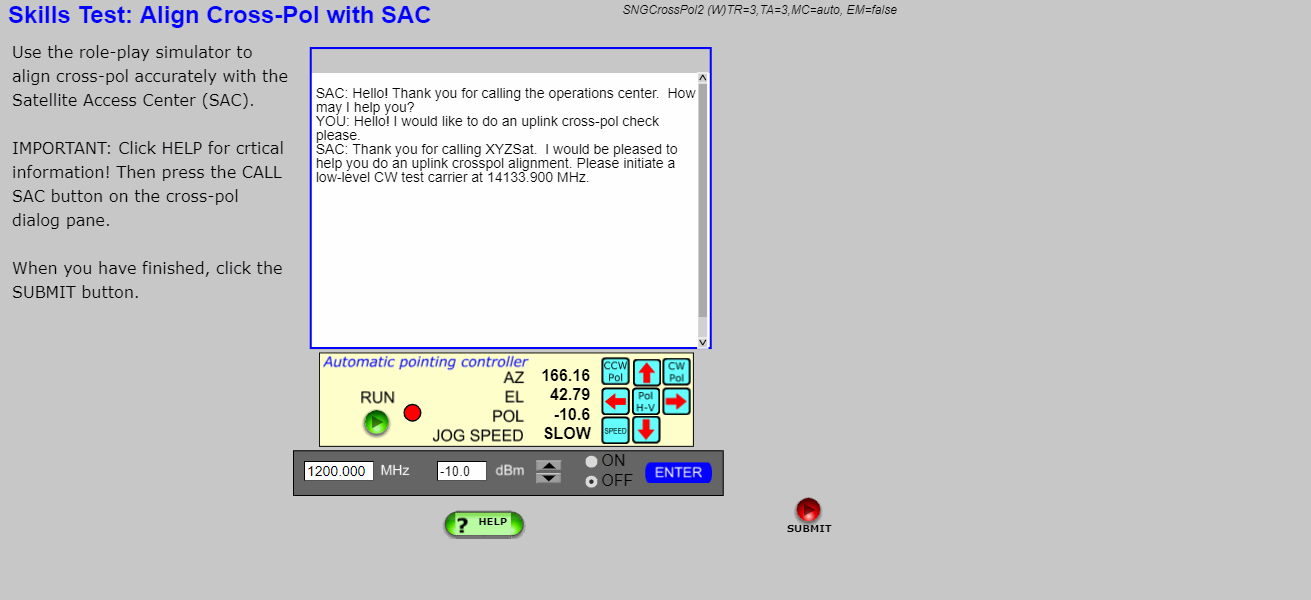
GVF-CERT-GAPO : General Autopoint Terminal Operator Certification Exam
Certification and recertification exam for GVF General Auto Point Operator Certification.
Certification and recertification exam for GVF General Auto Point Operator Certification.
Certification/recertification exam for operators of auto-point earth stations equipped with centrally-managed modems (such as VSAT) but whose antennas have not been type approved for autonomous, accurate pointing and cross-pol. Format: online, self-paced. Includes limited knowledge exam and interactive skills test simulators. This is the exam only. Training and review materials are NOT included. To prepare for this exam, courses GVF 530 and GVF 531 are highly recommended. If your certification has expired, take this exam to recertify, which will extend your certification for three years. GVF Training Member? Email gvfsupport@satprof.com to request free enrollment in this exam. Re-takes are free on request. Not a GVF Training Member? Purchase this exam and email support to request one-time 30-day extension of the above courses, if previously enrolled. Re-take requires re-purchase of the exam. For more info, please see the FAQ page.
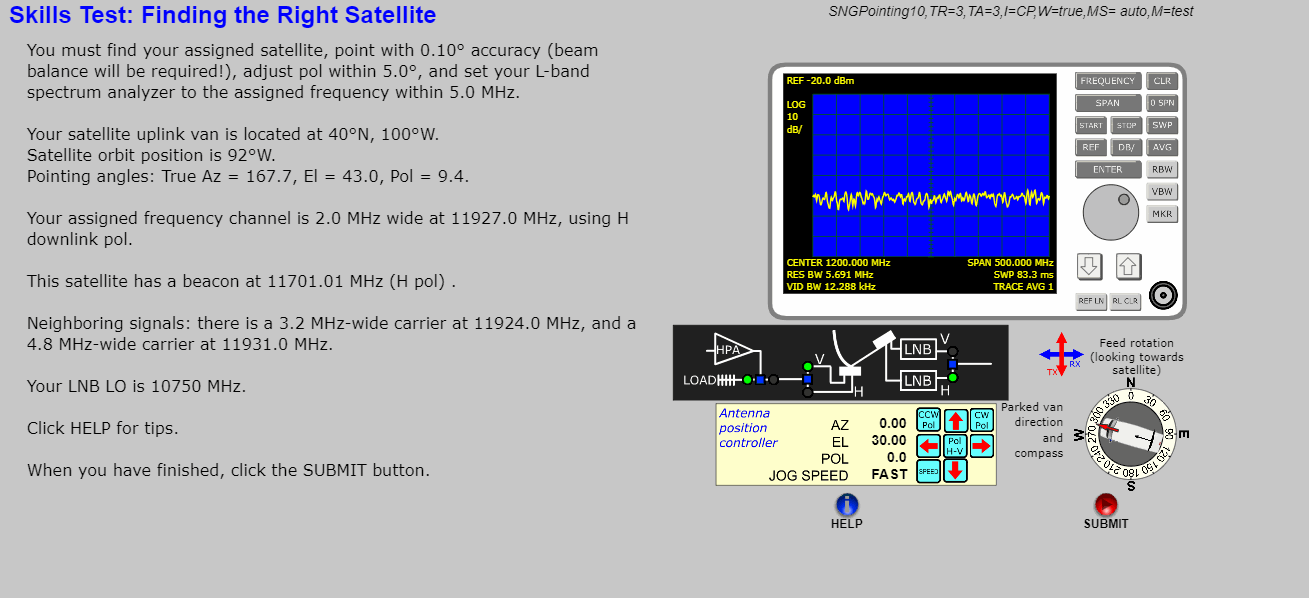
GVF-CERT-BTO : Basic Technical Operator Certification Exam
Certification and recertification exam for GVF Basic Technical Operator Certification.
Certification and recertification exam for GVF Basic Technical Operator Certification.
Certification/recertification exam for basic-level operators of mobile or fixed earth stations used for uplinks of video or other continuous carriers with manually-operated antenna pointing, RF equipment, and modulators, such as traditional SNG trucks. (Not centrally-managed modems or auto-point antennas). Format: online, self-paced. Includes limited knowledge exam and interactive skills test simulators. This is the exam only. Training and review materials are NOT included. To prepare for this exam, courses GVF 530, GVF 531, and GVF 532 are highly recommended. If your certification has expired, take this exam to recertify, which will extend your certification for three years. GVF Training Member? Email gvfsupport@satprof.com to request free enrollment in this exam. Re-takes are free on request. Not a GVF Training Member? Purchase this exam and email support to request one-time 30-day extension of the above courses, if previously enrolled. Re-take requires re-purchase of the exam. For more info, please see the FAQ page.
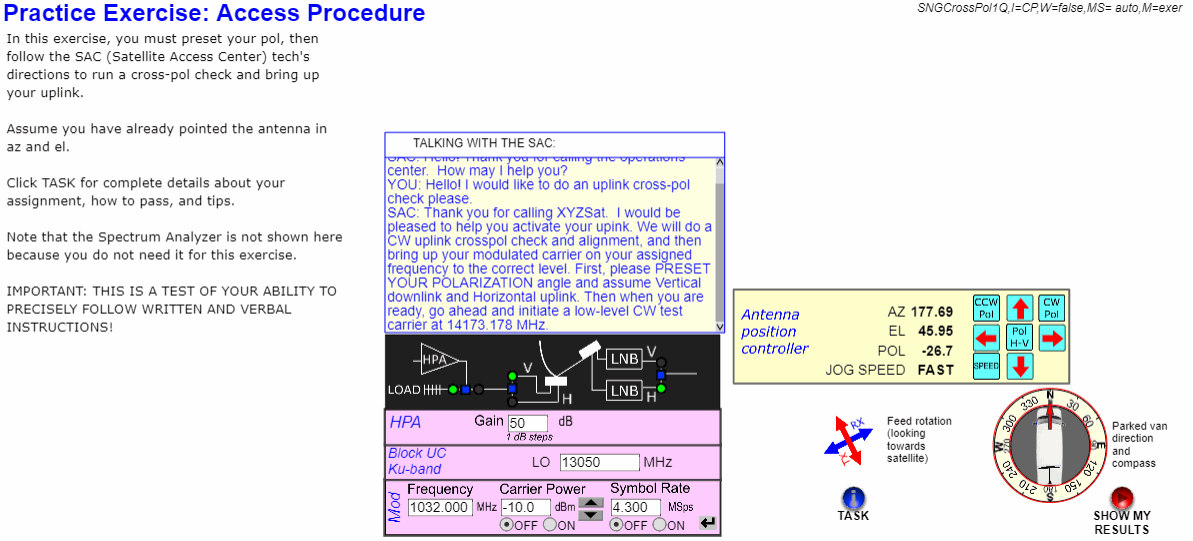
GVF-CERT-ATO : Advanced Technical Operator Certification Exam
Certification and recertification exam for GVF Advanced Technical Operator Certification.
Certification and recertification exam for GVF Advanced Technical Operator Certification.
Certification/recertification exam for advanced-level operators of mobile or fixed earth stations used for uplinks of video or other continuous carriers with manually-operated antenna pointing, RF equipment, and modulators, such as traditional SNG trucks. (Not centrally-managed modems or auto-point antennas). Format: online, self-paced. Includes limited knowledge exam and interactive skills test simulators. This is the exam only. Training and review materials are NOT included. To prepare for this exam, courses GVF 530, GVF 531, and GVF 532, as well as GVF 520 and knowledge of satcom theory are highly recommended. If your certification has expired, take this exam to recertify, which will extend your certification for three years. GVF Training Member? Email gvfsupport@satprof.com to request free enrollment in this exam. Re-takes are free on request. Not a GVF Training Member? Purchase this exam and email support to request one-time 30-day extension of the above courses, if previously enrolled. Re-take requires re-purchase of the exam. For more info, please see the FAQ page.
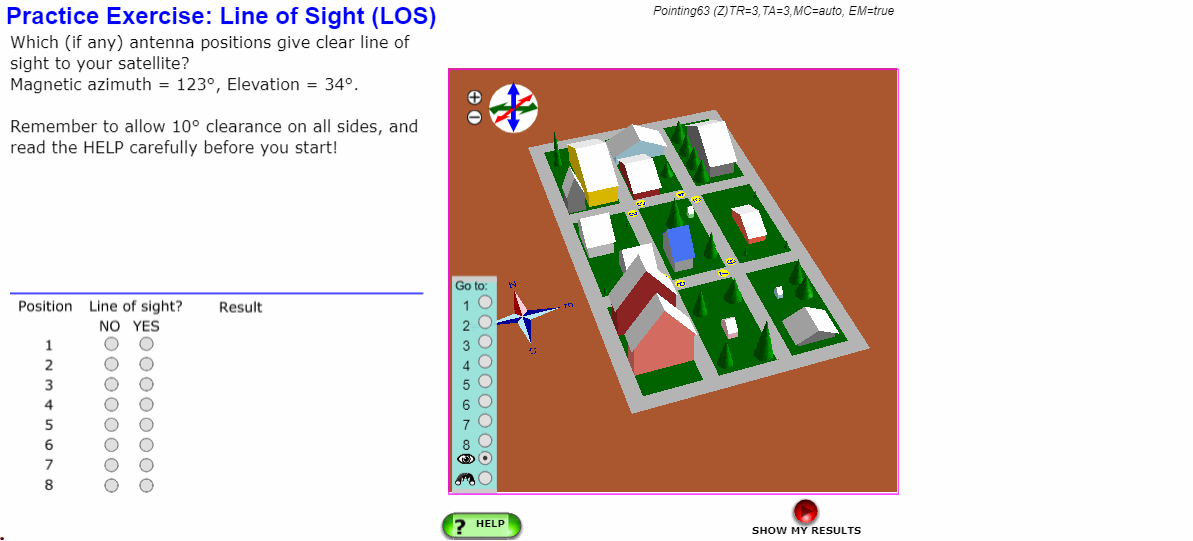
GVF-CERT-BAPO : Basic Autopoint Terminal Operator Certification Exam
Certification and recertification exam for GVF Basic Auto Point Operator Certification.
Certification and recertification exam for GVF Basic Auto Point Operator Certification.
Certification/recertification exam for operators of auto-point earth stations equipped with centrally-managed modems (such as VSAT) and whose antennas have been type approved for autonomous, accurate pointing and cross-pol. Format: online, self-paced. Includes limited knowledge exam and interactive skills test simulators. This is the exam only. Training and review materials are NOT included. To prepare for this exam, course GVF 530 is highly recommended. If your certification has expired, take this exam to recertify, which will extend your certification for three years. GVF Training Member? Email gvfsupport@satprof.com to request free enrollment in this exam. Re-takes are free on request. Not a GVF Training Member? Purchase this exam and email support to request one-time 30-day extension of the above courses, if previously enrolled. Re-take requires re-purchase of the exam. For more info, please see the FAQ page.
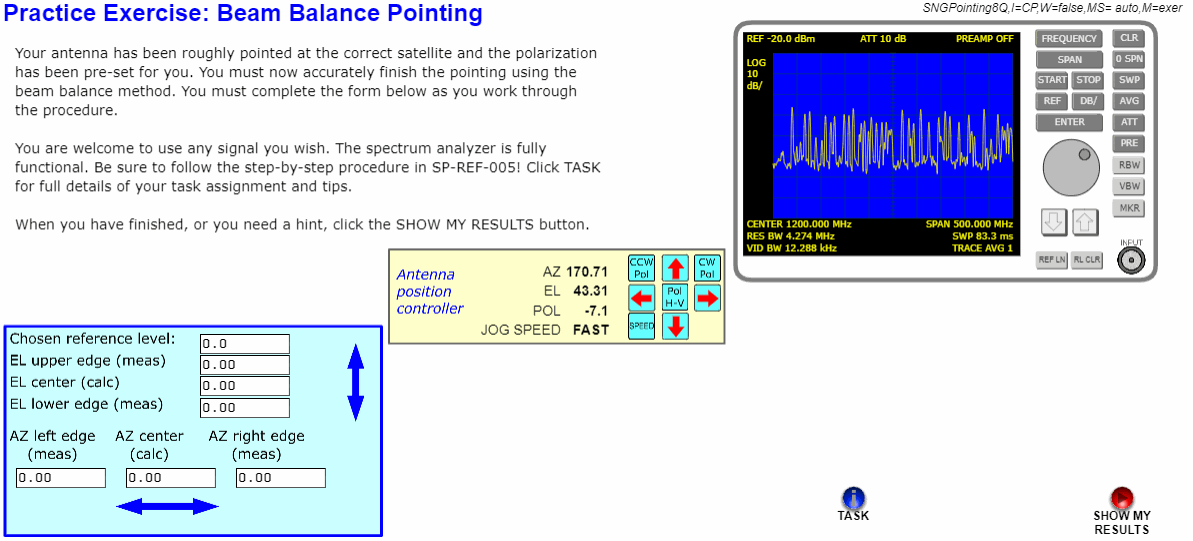
GVF-CERT-TOPC : Operations Center and Teleport Technician Certification
Certification and recertification exam for Operations Center and Teleport Technician Certification
Certification and recertification exam for Operations Center and Teleport Technician Certification
Satellite operations center and teleport technicians facilitate uplinks from a wide variety of remote terminals, as well as from their own facilities. They may support carrier lineups, cross-pol alignments, and help field technicians troubleshoot links. The GVF Operations Center and Teleport Technician (GVF-CERT-TOPC) certification demonstrates that you have the knowledge and skills that are important for performing these tasks efficiently and with minimum interference. This course serves as the final exam, and the recertification exam, for GVF-CERT-TOPC. To open this exam, you must have completed courses GVF 510 Edition 2, GVF 520, and GVF 532, . To gain the certification, students must successfully complete course GVF 520, which builds a solid foundation of satellite communications fundamentals, including orbits, footprints, waves, antennas, signals and noise, modulation, propagation, links, and access methods. The candidate must also complete GVF 510, which teaches critical skills for VSAT field technicians, in order to support activation and operation of managed terminals. Finally, for skilled support of SCPC, SNG, occasional-use, and similar uplinks, course GVF 532 is required, which covers operation of manually-controlled equipment for antenna pointing, carrier setup, and monitoring, as well as using a spectrum analyzer to identify the correct satellite from its beacons and spectral signature. Throughout, the General Access Procedure (as referenced by ITU-R S.2049 and WBU-ISOG) is emphasized for core principles of responsible, interference-free uplinking. A final certification exam ensures a solid grasp of the required knowledge and skills. All courses and exams are given online and include scored simulator exercises. Successful candidates receive the GVF Satellite Operations Center and Teleport Technician certification and are eligible to be listed in the GVF public certification database. Audience: Satellite operations center technicians, engineers, and technical managers; teleport technicians responsible for local uplinks or supporting occasional-use or permanent remote uplinks; technicians responsible for supporting field technicians with procedures such as “peak and pol”, P1dB testing, and carrier power adjustments. If your certification has expired, take this exam to recertify, which will extend your certification for three years. GVF Training Member? Email gvfsupport@satprof.com to request free enrollment in this exam. Not a GVF Training Member? Purchase this exam and email support to request one-time 30-day extension of 510 ed2, 520, and 532, if previously enrolled. Certification requirements: Course GVF 510: Core skills for VSAT Installers. Core skills required by all fixed VSAT installers for accurate antenna alignment and prevention of major sources of uplink interference. Second edition: enhanced simulators, revised cross-pol technique, new materials covering cross-pol and line of sight, and updated and enhanced Quick Reference Sheet. Course GVF 520:Satcom Fundamentals. Fundamental theory of VSAT communications for all VSAT technicians and engineers. Provides the student with a thorough understanding of the fundamental theories of VSAT communications. This knowledge is essential for every skilled and effective satellite ground equipment terminal technician. Course GVF 532: Core Uplinking Skills. Covers operation of uplink systems including manual controls for antenna pointing, carrier setup, and monitoring. In this course, you will learn how to use a spectrum analyzer to identify your correct satellite from its beacons and spectral signature as you command the antenna to move. You will then learn how to carry out the full General Access Procedure. Final examination. Covers all knowledge topics from GVF 510, 520, and 532. Includes scored simulator assessments of the following skills: line of sight and site selection; accurate pointing of manual and motorized antennas with signal meters and with spectrum analyser; interactive cross-pol alignment with an operations center; bringing up carriers in accordance with the General Access Procedure; calculating uplink, downlink, and translation frequencies for 70MHz and L-band systems. Note: A Hands On Skills Test is not required for this certification. For more info, please see the FAQ page.
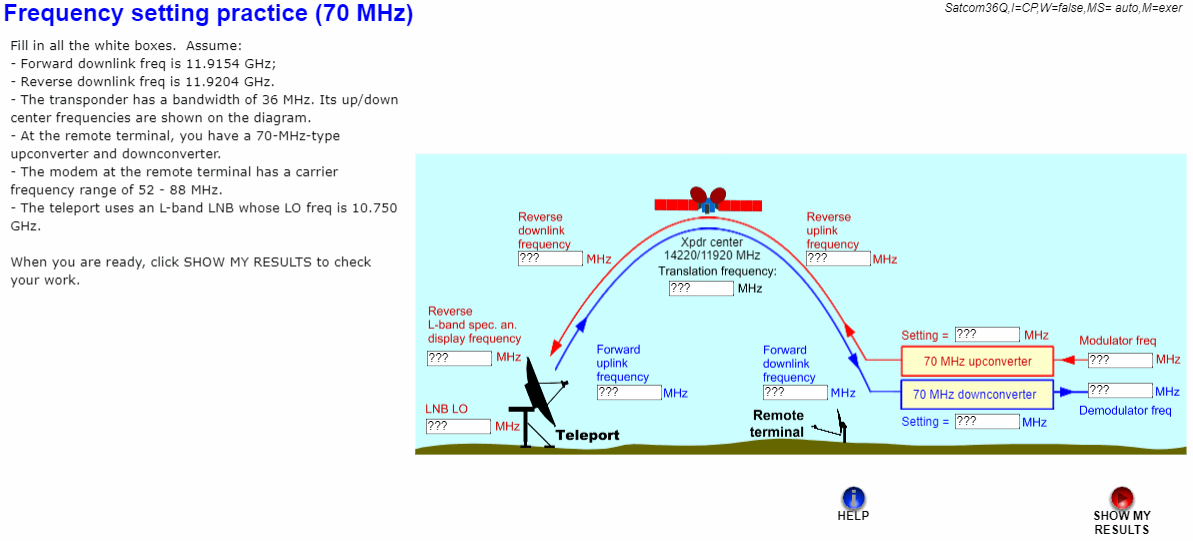
GVF-CERT-FT_21 : Field Technician Certification/Recertification Exam
Certification and recertification exam for GVF Field Technician
Certification and recertification exam for GVF Field Technician
GVF Field Technician Certification recognizes that the holder has received thorough simulator-based online training for fixed VSAT installation and maintenance for minimum interference. This course serves as the the final exam, and the recertification exam, for GVF-CERT-FT. To open this exam, you must have completed courses GVF 510 Ed. 2, GVF 520, and and GVF 521. When you complete this certification, you can proceed to GVF Advanced Satcom Professional certification by completing a Basic Hands On Skills Test (HOST-B). If your GVF-CERT-FT certification has expired, take this exam to recertify, which will extend your certification for three years. GVF Training Member? Email gvfsupport@satprof.com to request free enrollment in this exam. Not a GVF Training Member? Purchase this exam and email support to request one-time 30-day extension of 510 ed2, 520, and 521, if previously enrolled. For more info, please see the FAQ page.
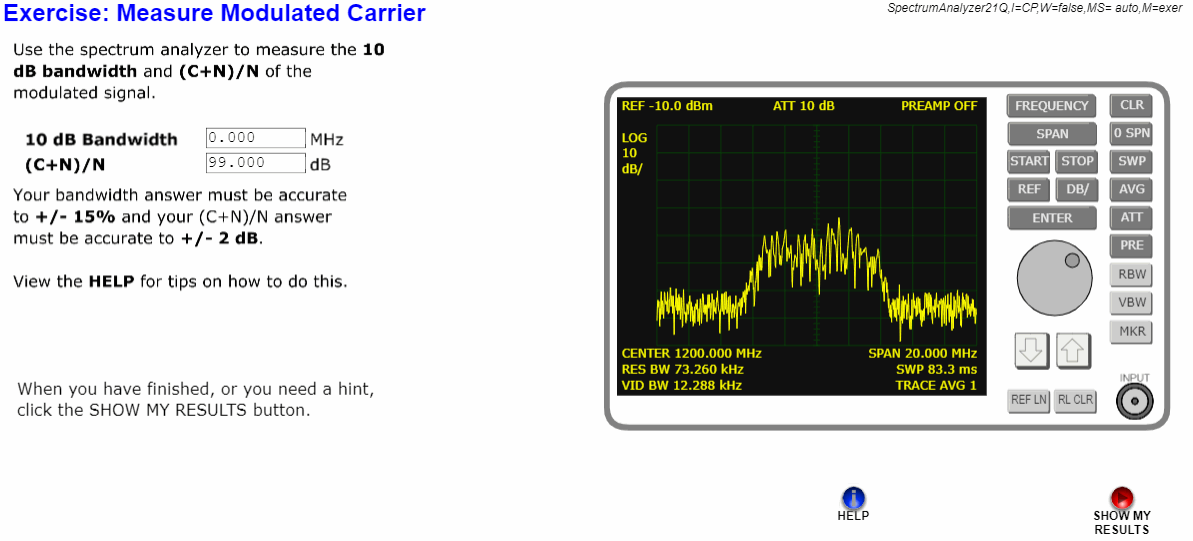
GVF-CERT-FE_22 : Field Engineer Certification/Recertifcation Exam
Certification and recertification for GVF Field Engineer
Certification and recertification for GVF Field Engineer
GVF Field Engineer Certification demonstrates broad satcom knowledge and skills, including industry business, DC and RF electronics, fixed terminal installation, satcom theory, operation of mobile terminals, spectrum analyzer technique, and uplinking from motorized earth stations such as teleports. This course serves as the the final exam, and the recertification exam, for GVF-CERT-FE. To open this exam, you must have completed the GVF Field Technician certification (GVF-CERT-FT), and courses GVF 500, GVF 505, GVF 522, GVF 530, GVF 531, GVF 532,. When you complete this certification, you can proceed to GVF Advanced Satcom Professional certification by completing a Basic Hands On Skills Test (HOST-B). If your GVF-CERT-FE certification has expired, take this exam to recertify, which will extend your certification for three years. GVF Training Member? Email gvfsupport@satprof.com to request free enrollment in this exam. Not a GVF Training Member? Purchase this exam and email support to request one-time 30-day extension of your prereq courses, if previously enrolled in them. For more info, please see the FAQ page.